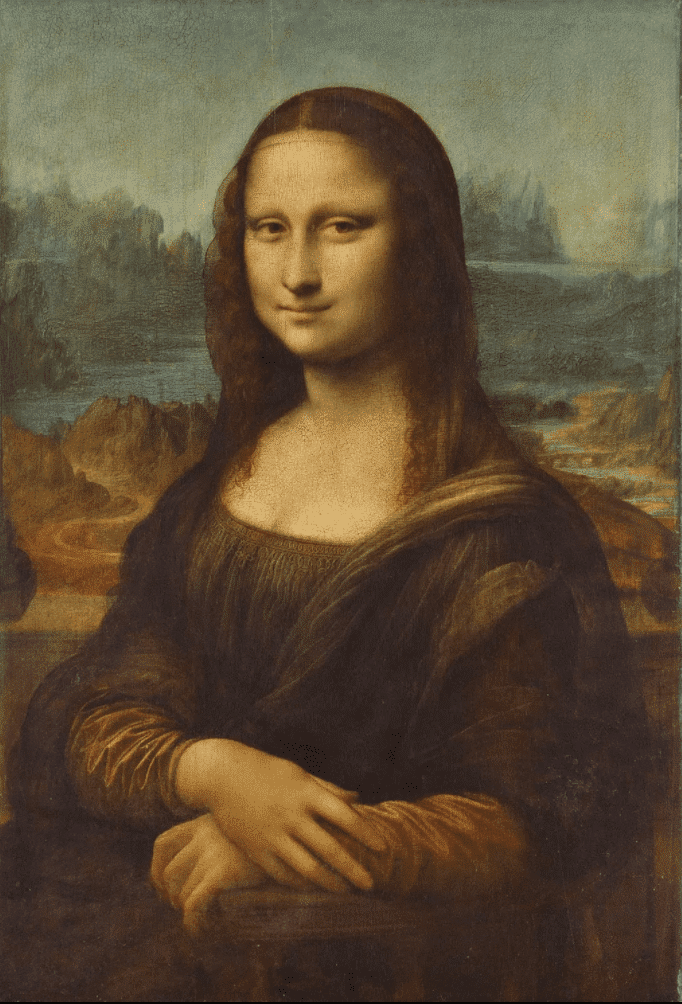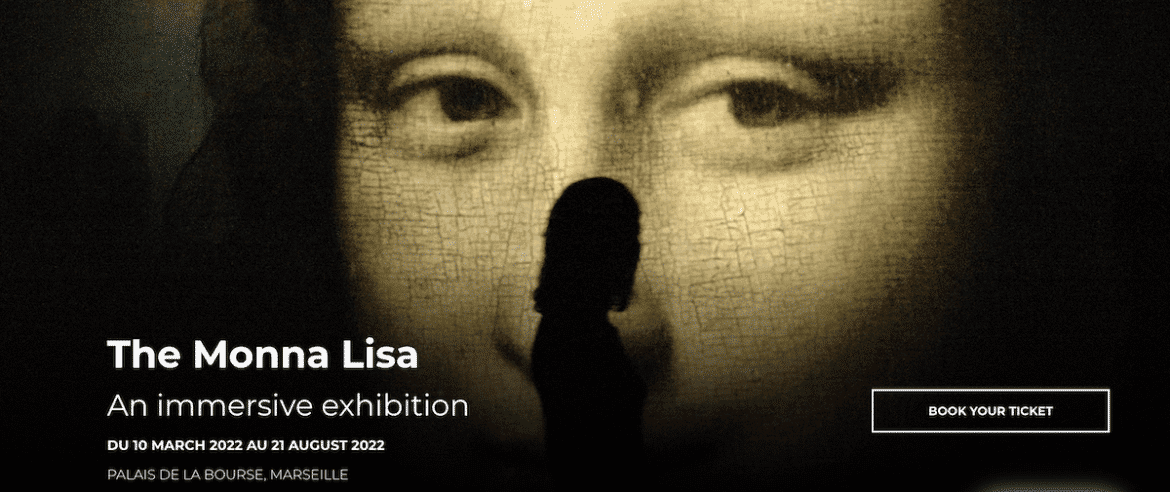Perhaps the Louvre’s most famous work of art, the Mona Lisa (or La Joconde, as it is referred to in France) has inspired generations of artists and detectives alike.
SUBSCRIBE TO THE MAGAZINE
For its first exhibition, the Grand Palais Immersif – in collaboration with the Louvre – invites viewers to discover da Vinci’s masterpiece through an immersive and interactive sensory experience, using large-scale, high-definition digital projections. The exhibit is divided into six themed spaces, each of which offers a reason why the Mona Lisa one of the greatest works of art in the world.
In excitement of this new unprecedented experience of the mythical portrait – which is open at Le Palais de la Bourse in Marseille from March 10th until August 21, 2022 – we take a closer look at its four centuries of history. Read on below!

It once disappeared on a two-year hiatus, only to return to international stardom.
On August 22nd, 1911, the painter Louis Béroud arrived at the Louvre early in hopes of sketching the Mona Lisa, but was surprised to discover an empty spot where it usually hung.
He quizzed the museum’s security guards, who hadn’t noticed and assumed it must have been taken away to be photographed. A few hours later, however, the staff had to admit the unthinkable: the masterpiece had disappeared from the museum overnight.
At the time, the Mona Lisa itself was not yet world-famous, but the disappearance of a painting from such a prestigious museum was considered a big deal. French law went to work with a vengeance, interrogating a wide range of suspects over the following years (including the famous painter, Pablo Picasso, and writer Guillaume Apollinaire!).
Public pressure started to mount, and the French press became fascinated with the affair, offering several large rewards for the Mona Lisa’s safe return. The story became international, and, in turn, transformed the relatively unknown painting into an art world superstar.
In the end, Mona was actually only a few streets away, squirreled away under the bed of Vincenzo Peruggia, an Italian window-maker who had worked in the Louvre. He kept the masterpiece for over two years before attempting to sell it to an Italian art dealer, who luckily reported the event to the authorities.
Vincenzo was arrested (although the Italian courts treated him leniently), and, after brief stints in museums in Florence and Rome, the Mona Lisa returned to Paris in a bespoke, first-class train carriage.
It has been in the possession of kings, emperors and even a first lady.
Leonardo da Vinci began working on the Mona Lisa while living in his native Italy and did not finish it until he moved to France (at the invitation of the French king, Francois I, who commissioned him for artworks). Francois I displayed the painting in his palace in Fontainebleau, and there it remained for a century. Later, “Sun King” Louis XIV had it installed in his new residence of Versailles. Cut to another couple of centuries later, when the artwork fell into the hands of newly-annointed emperor Napoleon Bonaparte, who took a shine to it and moved it to his private quarters.
In 1804, the Mona Lisa was made permanently public in the Louvre, which had recently opened. It would later become, by law, the exclusive property of the people of France, deemed “an inalienable part of French cultural heritage.” In fact, one of the only times that the French have let it out of their sight was at the request of U.S. First Lady Jackie Kennedy. Charmed by his Francophile visitor, French President Charles de Gaulle agreed for the painting’s temporary display at both the National Gallery of Art in Washington D.C. and the Met Museum, in New York City.
Who is Mona Lisa?
Mona Lisa’s true identity is highly debated – was she a noblewoman or the wife of a rich merchant? Was she actually a man, or even Leonardo himself? Historians, artists and amateur sleuths have been puzzling over who the woman in the painting is for centuries… and it is intent to remain a mystery.
One theory is the possibility that Mona was an Italian noblewoman from one of the towns Leonardo had lived in; suspects include Isabella d’Este – the Marquise of Mantua – and Costanza d’Avalos – the Duchess of Francavilla – but the most likely is thought ot be Lisa Gherardini del Giocondo, spouse of the famous Florentine silk merchant Francesco del Giocondo (hence the names by which the painting is referred to in Italy and France: La Gioconda and La Joconde, respectively).
Some theories are more far-fetched. Psychologist Sigmund Freud famously posited that the portrait is based on Leonardo’s memories of his mother, which, over time, evolved into a vision of ideal femininity and motherhood. Another idea, examined by Italy’s National Committee for Cultural Heritage, sees the painting as an actual self-portrait of the artist, only under a feminine guise. Another potential male candidate is Gian Giacomo Caprotti, Da Vinci’s assistant of 20 years and speculated lover…
Whatever, or whoever, Da Vinci’s inspiration for the Mona Lisa was, the painting continues to fascinate, centuries later, drawing upwards of 20,000 visitors daily. For the opportunity to see it in a brand-new way, reserve your ticket for the new immersive digital exhibit, while you can!
Who do you see behind the world’s most famous smile?


